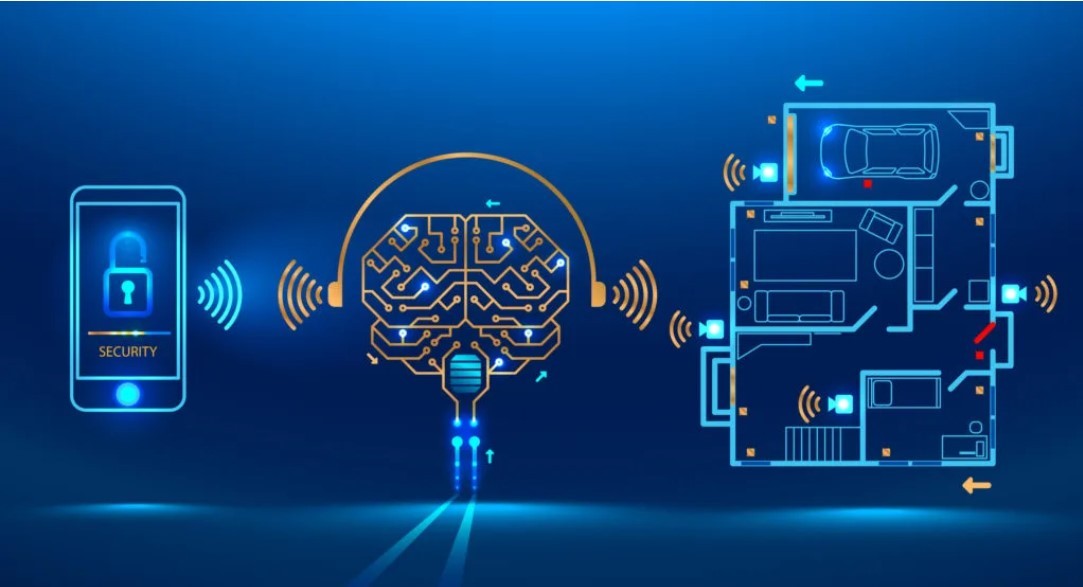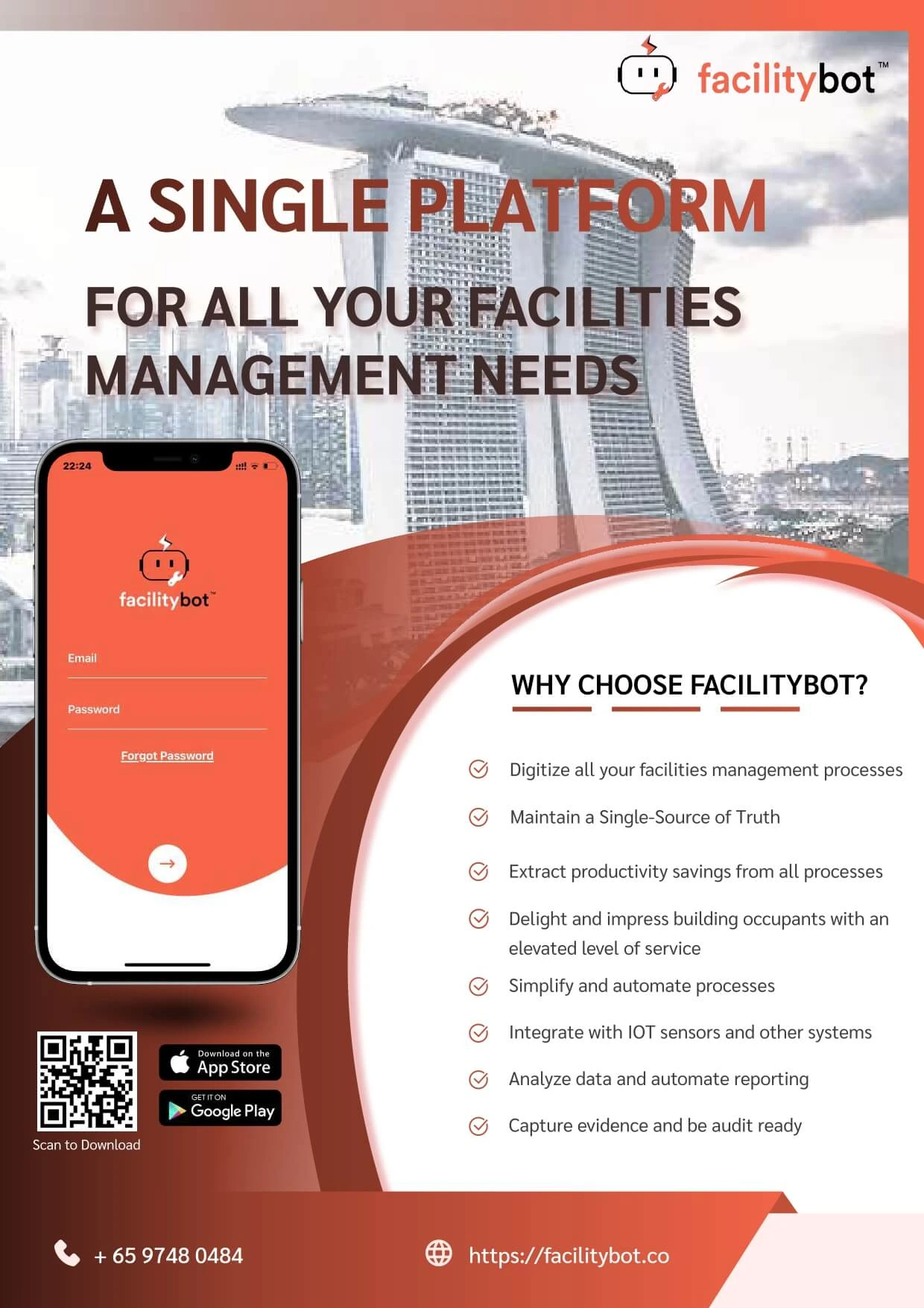In 2025, facility management is no longer just about maintenance — it’s about intelligence, connectivity, and automation. The rise of AI integration in facility management is transforming how buildings operate, interact, and evolve.
When integrated with IoT (Internet of Things) and BMS (Building Management Systems), AI turns traditional facilities into smart ecosystems capable of self-diagnosis, predictive control, and energy optimization.
This article explores how AI-powered facility management software, such as FacilityBot, integrates with IoT and BMS to streamline operations, improve sustainability, and redefine efficiency.
Understanding AI Integration in Facility Management
AI integration facility management refers to combining artificial intelligence with various operational technologies like IoT sensors, automation tools, and management systems.
In simple terms, AI acts as the “brain,” IoT serves as the “senses,” and the BMS functions as the “nervous system” of a smart building.
- AI (Artificial Intelligence): Analyzes data, learns from patterns, and predicts outcomes.
- IoT (Internet of Things): Connects devices such as sensors, HVAC systems, lighting, and elevators.
- BMS (Building Management System): Controls and monitors building infrastructure like energy use, ventilation, and security.
By integrating these three technologies, facility managers can achieve end-to-end visibility, automated control, and data-driven decision-making.
How AI, IoT, and BMS Work Together
When implemented effectively, AI, IoT, and BMS systems communicate seamlessly to optimize every aspect of facility operations. Here’s how each plays its role:

- IoT Sensors Capture Real-Time Data
Sensors installed throughout the facility monitor parameters like temperature, occupancy, air quality, and equipment performance. - BMS Manages System Controls
The BMS receives sensor inputs and automatically adjusts building functions such as HVAC settings, lighting, or energy allocation. - AI Analyzes and Predicts Outcomes
AI algorithms process data from IoT and BMS systems to predict equipment failures, optimize energy use, and automate maintenance schedules. - Facility Management Software Unifies Everything
Platforms like FacilityBot integrate all these components — AI insights, sensor data, and system controls — into one centralized dashboard.
This creates a closed-loop ecosystem where buildings learn, adapt, and improve over time.
Benefits of AI Integration in Facility Management
Integrating AI, IoT, and BMS into facility operations delivers a wide range of benefits, from operational efficiency to sustainability.
1. Predictive Maintenance and Fault Detection
With AI-driven analysis of IoT sensor data, facilities can detect anomalies before they lead to breakdowns.
- Predict when HVAC or electrical systems need service.
- Automatically create maintenance tickets in FacilityBot for rapid response.
- Reduce downtime and prolong asset lifespan.
2. Energy Optimization
AI learns usage patterns and dynamically adjusts lighting, cooling, and heating systems.
- BMS executes automated changes based on AI insights.
- Significant reductions in energy waste and carbon footprint.
- FacilityBot analytics help track real-time consumption and cost savings.
3. Enhanced Occupant Comfort and Safety
AI uses IoT data to maintain optimal indoor conditions.

- Monitor air quality and adjust ventilation automatically.
- Integrate with safety sensors for early detection of fire or water leaks.
- FacilityBot automates alerts and escalations to relevant teams instantly.
4. Data-Driven Decision-Making
Facility managers gain unified insights through AI dashboards.
- Identify inefficiencies across multiple buildings.
- Benchmark performance and predict future needs.
- FacilityBot’s visualization tools make data interpretation intuitive.
5. Seamless Automation and Remote Management
AI integration allows centralized control via cloud-based facility management software.
- Facility teams can monitor multiple properties remotely.
- Automated workflows replace manual checks.
- Integration with chatbots (WhatsApp, Teams, Slack) in FacilityBot simplifies service requests.
FacilityBot: Simplifying AI Integration in Facility Management
FacilityBot is at the forefront of AI integration facility management, offering seamless connectivity with IoT and BMS systems.
Here’s how FacilityBot enables smarter facility operations:
- 🔹 IoT Integration: FacilityBot connects with smart sensors for live monitoring of assets, temperature, humidity, or energy use.
- 🔹 AI Predictive Insights: The platform analyzes sensor data to forecast failures and optimize maintenance schedules.
- 🔹 BMS Connectivity: FacilityBot integrates with building management systems for unified control of HVAC, lighting, and energy.
- 🔹 Automated Workflows: AI triggers preventive maintenance or fault resolution automatically — no human intervention needed.
- 🔹 Chatbot Interface: FacilityBot supports communication via WhatsApp, Teams, and Slack for easy service requests and updates.
- 🔹 Analytics Dashboard: Visualize trends, performance, and KPIs across all integrated systems.
By combining AI, IoT, and BMS, FacilityBot empowers organizations to operate more efficiently, reduce costs, and achieve sustainability goals — all through one platform.
Real-World Example: AI + IoT + BMS in Action
Consider a large commercial office building:
- IoT sensors detect occupancy levels and temperature changes throughout the day.
- The BMS automatically adjusts HVAC operations for optimal comfort and energy efficiency.
- FacilityBot’s AI module predicts that one air handling unit is nearing a fault based on vibration data.
- A preventive maintenance task is automatically created and assigned via FacilityBot before a breakdown occurs.
The result?
Reduced downtime, improved tenant comfort, and lower operational costs — achieved through AI integration facility management.
Challenges in AI Integration and How to Overcome Them
While AI integration brings immense value, it also requires careful implementation.
- Data Compatibility: Legacy systems may not easily connect with AI or IoT platforms.
Solution: Use middleware APIs or choose software like FacilityBot with open integration capabilities. - Cybersecurity: More connected devices mean higher risk.
Solution: Ensure robust encryption and access controls. - Change Management: Staff training is essential for adoption.
Solution: FacilityBot’s intuitive interface and chatbot workflows simplify user experience.
The Future of AI-Integrated Facilities
As AI, IoT, and BMS technologies mature, the next generation of facilities will be autonomous, sustainable, and self-optimizing.
We can expect:
- AI-driven energy trading between buildings.
- Fully automated fault resolution via robotic maintenance.
- Integration with ESG (Environmental, Social, and Governance) monitoring systems.
FacilityBot’s ongoing innovation positions it as a leader in this transformation, offering AI-powered facility management that adapts to tomorrow’s needs today.
Conclusion
Integrating AI facility management software with IoT and BMS systems is more than a technology upgrade — it’s a strategic leap toward efficiency, sustainability, and resilience.
By adopting AI integration facility management solutions like FacilityBot, organizations can unify building data, automate maintenance, and optimize energy use — all from a single intelligent platform.
The future of facilities is smart, connected, and AI-driven — and with FacilityBot, that future starts now.




